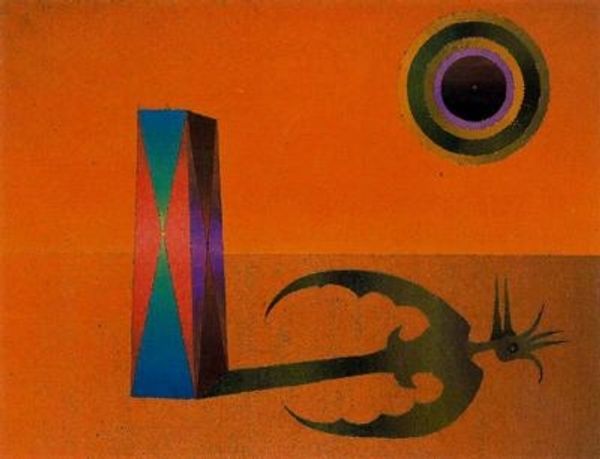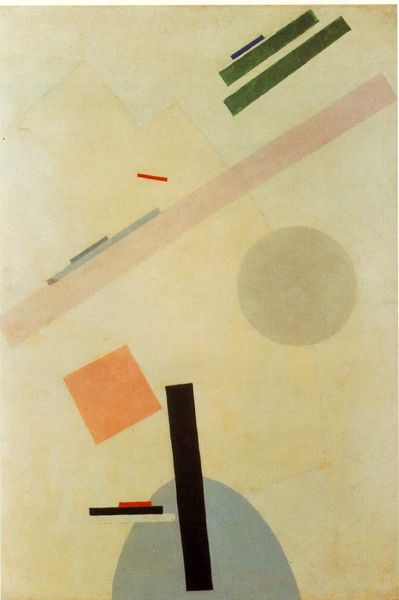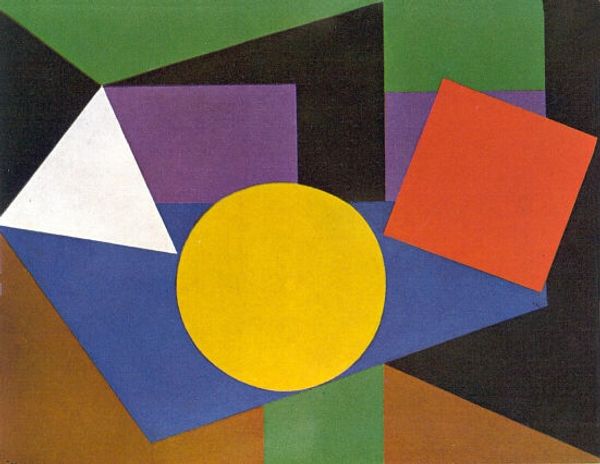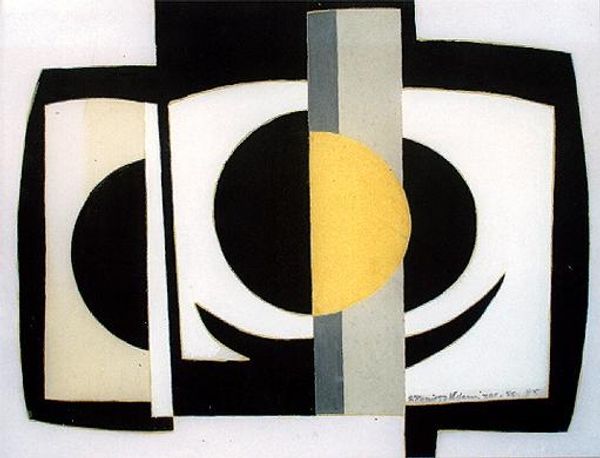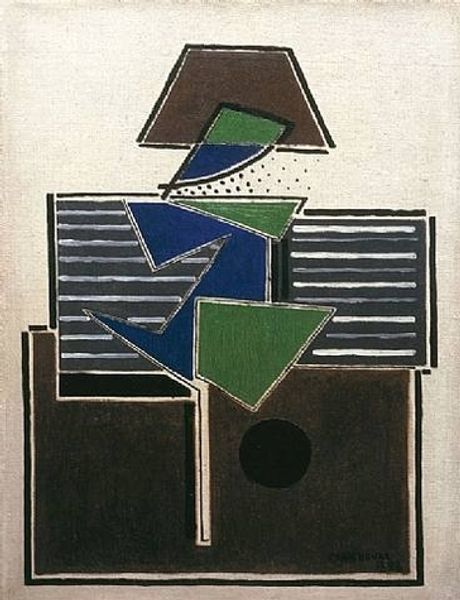
Picture II, Gnomus. (Stage set for Mussorgsky's Pictures at an Exhibition in Friedrich Theater, Dessau) 1928
0:00
0:00
tempera, painting
#
tempera
#
painting
#
form
#
black and white theme
#
expressionism
#
geometric-abstraction
#
abstraction
#
line
#
bauhaus
#
modernism
Copyright: Public domain
Curator: Kandinsky's "Picture II, Gnomus" from 1928—a stage set design employing tempera—strikes me immediately as a visual paradox. Editor: Yes, it’s like peering into a distorted reality! There's this stark geometric stage framed by bold black and white stripes, giving a dizzying, almost oppressive sensation of confinement. The shapes and colors feel so restricted by their setting. Curator: I think that oppressive feeling might stem from the Gnomus character it represents. The gnomus is, of course, derived from Mussorgsky's piece, where it signifies a grotesque and distorted creature, hence Kandinsky's jagged lines, clashing colors, and fractured space. The circle, perhaps alluding to wholeness, feels out of reach, almost mocking the fractured being. Editor: Absolutely! Kandinsky’s strategic use of abstraction transforms a musical idea into a critique of form, I think, exposing the precarious position of the individual caught within rigid social constructs. I see how the vertical lines mimic bars or perhaps the harsh realities of a constricting world. Curator: That's an interesting connection. Considering the Bauhaus context, where Kandinsky was teaching at the time, these geometric forms also speak to the utopian aspirations of creating harmony from chaos, where geometric form supersedes any specific identity to reveal elemental truths. Look how he strips everything back to the essential form to explore fundamental visual language, to seek universal, non-verbal communication. Editor: Right, but that push for universality often came at the expense of acknowledging diverse individual experiences. Those universal values, especially in the Bauhaus movement, weren't always as neutral as they seemed; they served some interests over others, so seeing this set design within that tension really colors the way I view the work. Curator: Indeed, it's a complex piece. It leaves us with much to contemplate in its blend of dissonance and harmony. Editor: Ultimately, the dynamism within this artwork allows a discussion of restriction and freedom, creating something new from what can initially be interpreted as disharmony.
Comments
No comments
Be the first to comment and join the conversation on the ultimate creative platform.

